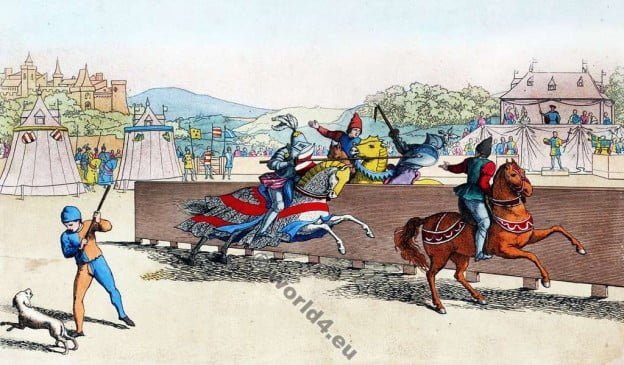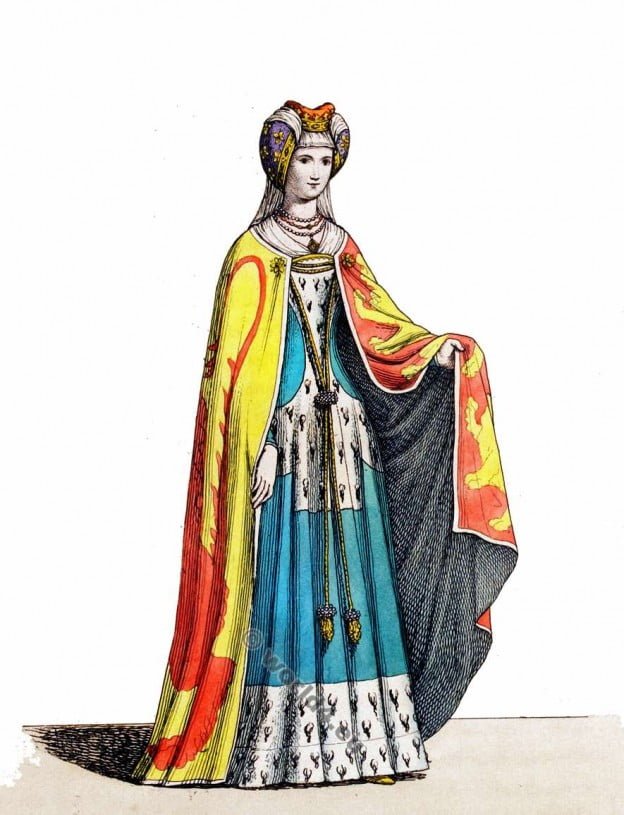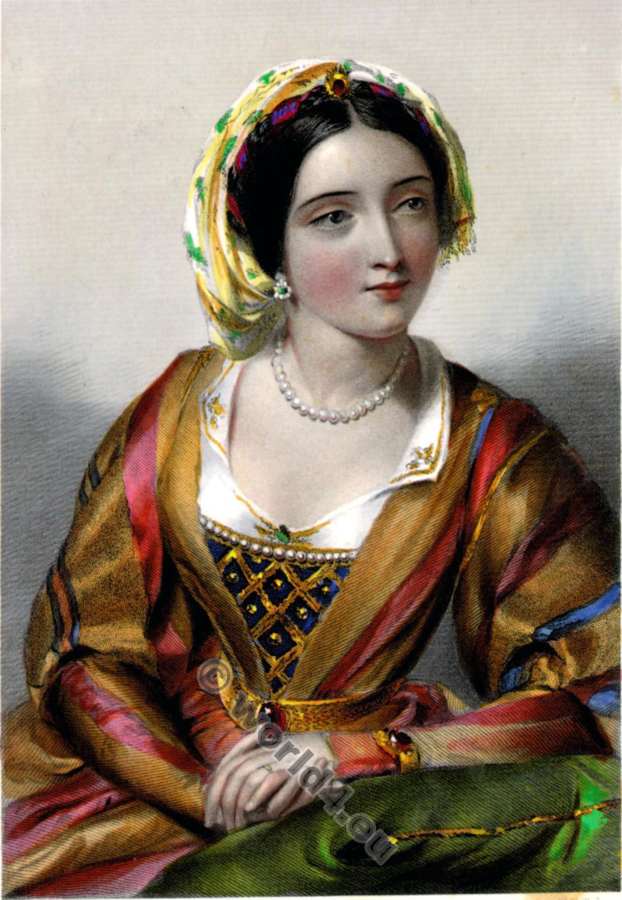Costume Milan Italie médiévale du 14ème siècle
Category: Middle Ages
Middle Ages costumes and fashion. Period between 700 to 15th century. Style of Byzantine, Carolingian, Romanesque, Gothic and Renaissance.
Tribunal des Marchands. Costumes 14ème siècle.
Tribunal des Marchands. Costumes 14ème siècle.
Charles D’Anjou. French Capetian royal dynasty. 13th century.
Charles I of Anjou, a side branch of the French royal dynasty Capetian.
Tournament of Knights. 14th century. Medieval clothing.
Historical costumes from the thirteenth, fourteenth and fifteenth centuries by Camille Bonnard and Paul Mercuri
Costume Militaire. Guillaume de Bibra. 15ème siècle.
L’armure et les armes offensives de Guillaume de Bibra offrent de nouveaux détails sur les guerriers du XVe siècle.
Mode féminine du Moyen Age. Noble anglaise. 13ème siècle.
Les femmes des gentilshommes unissaient sur leurs manteaux ou surcots les armoiries de leurs époux avec celles de leur famille.
Costumes de Noblesse du 14ème siècle. Histoire de la mode médiévale.
La jeune fille qui parle la queue est coiffée d’un bonnet de velours noir. La robe est jaune et garnie sur la poitrine de velours noir; la robe de dessous est verte et la chaussure est noire.
Oriental carpet. 15th century. Caucasus.
Carpet with conventionalized Animal-Figures: Incomplete Asia Minor or the Caucasus; First half of the 15th century. Length, 172 cm.; width, 90 cm.
Eleanor of Castile first wife of King Edward I.
Eleanor of Castile (also Leonor, 1241 – † 28 November 1290 in Harby, Nottinghamshire) was the first wife of King Edward I. Royal Consort of England.
England. Roger Walden, Bishop of London 15th century.
From a painting on glass in the windows of St. Mary’s Hall, Coventry.









